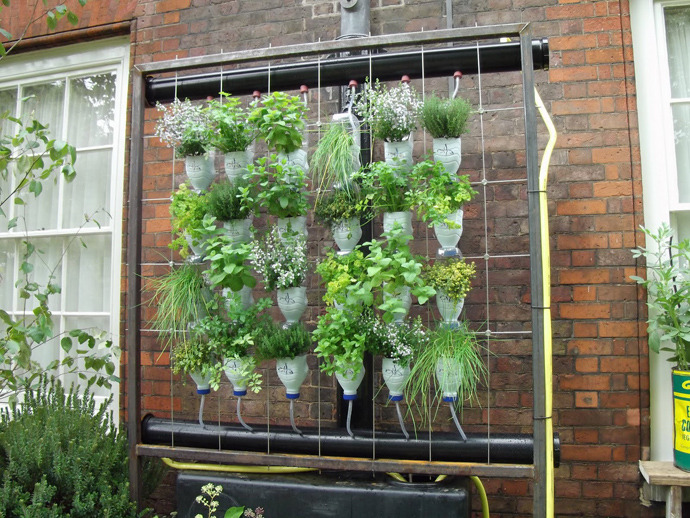Unfortunately, the results of the Palmolive experiment were compromised by an infection of powdery mildew. I removed plants that showed early symptoms, but in no time the infection spread to the entire population . I thought perhaps it had come from the environment in my office, but simultaneously the infection started rearing its ugly head within my educational garden at home. I'm concerned that this mildew will spread to other species at home, but it hasn't done so yet.
The home garden is actually thriving. The front (educational) garden is host to Mesculn greens (arugula, endive, kale and lettuce), tomatoes, basil, sage, dill, oregano, radish (white icicle), carrots (Danvers #126), lettuce (Romaine), strawberry (ornamental), rosemary (Tuscan blue), and peppers. The rear (edible) garden is surviving the summer heat much better than last year under the mist system. Chard, chives, onions, pumpkin, and squash are light-harvesting. I haven't tied the fruits with pantyhose yet, I saw a video on YouTube that said it was optional and only necessary if you want extra large fruits (~15 lbs).
 |
| Inspiration |
I've been harvesting seeds from parsley, spinach, and radish (easter egg blend). Not all the plants in the yard are first generation, but I'm looking forward to replanting the seeds I've harvested. I started tomato seeds from fruits I purchased at the store when I cut the fruit open and found a few seeds already germinating. I put the sprouting seeds on a paper towel and kept it moist morning and night until the seedlings were about 3" tall. I put them in containers yesterday, hopefully they will survive (at least some of them) to maturity.
In terms of vertical agriculture and upcycling: The carrots are growing in recycled and reused 2L soda bottles. The oregano, radish, and sage were started in recycled paper coffee cups. I've made a new scaffold out of a baby-gate that we used to use to keep our dog out of the kitchen. I have been saving plastic containers from milk and laundry detergent (plastic bottles with handles) since we've moved into our house (~2 years). I rinsed them out and cut the bottoms out, tieing them to the baby-gate using polyester rope (originally I wanted zip ties but these rope segments might be better since they're 100% reversible).
 |
| Materialization |
My idea was to have the excess water from the uppermost row drip onto the plants in the second highest row and so on, so far I only have 2 rows and they don't seem to be draining properly at the moment because they're attached near the bottom of the container rather than the top. I may yet drill holes in the containers and zip-tie them so that they're more secure and conserve water. The irony is that my neighbor waters his concrete and I try to conserve water at any given moment, even planting drought-tolerant plants for the purpose of having to water less. My neighbor scolds me when I don't drench the garden and has even offered to do the watering for me. How's that for inspiring the neighborhood?
Dear husband is worried about eating out of containers that used to contain chemicals. I'm not sure it's dangerous, but just in case I plan to use these containers only for seed-generation and promise not to serve any of the produce generated at dinner. What's growing in your yard (or on your urban farm)?
